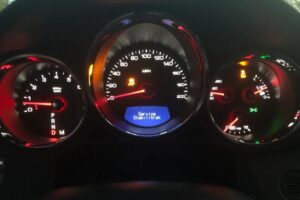The malfunction indicator lamp is a critical vehicle warning system. In this article, I’ll talk about what it means, why it comes on, and what you should do when it comes on.
You may know the malfunction indicator light (MIL) by its other name, check engine light. The purpose of the Malfunction Indicator Lamp is to alert you of a potential problem with your car.
Read on to learn more about the malfunctioning indicator lamp and what you should do when you see it come on.
What Does the Malfunction Indicator Lamp Mean?
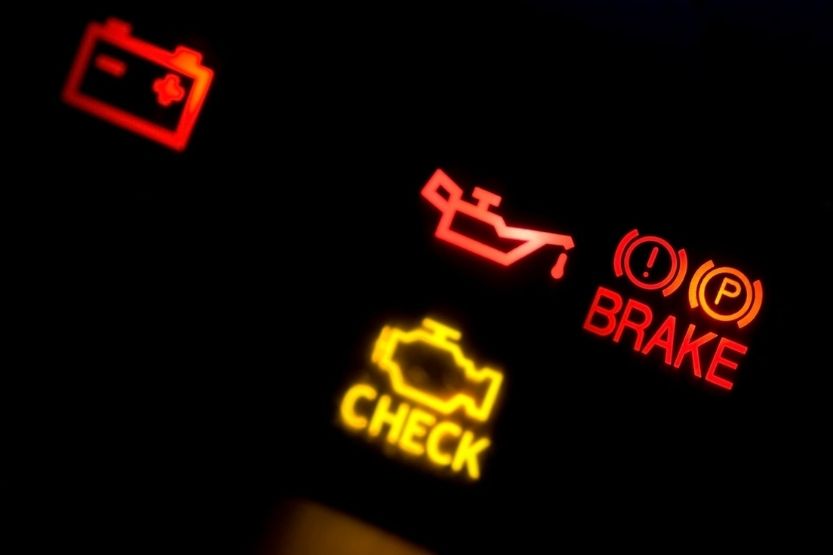
It’s normal for the malfunction indicator lamp (MIL) to come on when you start your car. But it should go out after your car’s computer is finished with the self-diagnostic test.
What if it doesn’t go out? It only means it has detected a severe problem that could potentially affect your emissions control system. The problem could be as simple as a loose gas cap or something as serious as a bad oxygen sensor or catalytic converter.
Let’s find out the meaning of the malfunction indicator lamp for cars manufactured by these popular automotive brands:
1. Honda
Two Modes
The malfunctioning indicator lamp of most Honda cars has two modes:
- Blinking or flashing – This warns you of a severe issue brewing beneath the hood of your car.
- Steady – This indicates a minor issue, such as a loose gas cap.
Engine Emissions Control System Issue
The malfunction indicator lamp usually illuminates for the Honda Fit when there’s an issue with the engine emissions control system or the fuel fill cap is loose or missing. It could also happen when one or more of the cylinders inside the engine of your car misfires.
What to Do
When the Malfunction Indicator Lamp of your Honda car comes on, here’s what you need to do:
- Park your car somewhere safe, preferably not near flammable items.
- Stop the engine. Wait for the engine to cool, which may take around 10 minutes or longer.
- Check if the fuel fill cap is loose or tight.
- Get your car to the nearest automotive repair shop or dealership. Make sure you maintain a speed of 31 mph (50 km/h) or less.
2. Kia
Engine Management Light or Check Engine Light
The malfunction indicator lamp in Kia models is also known as the engine management light or check engine light. When it illuminates, it’s a way for your car’s engine computer to tell you that there’s something wrong.
Kia’s Malfunction Indicator Lamp Color
Here’s what the color of Kia’s malfunction indicator lamp means:
- Red: If the light is red, your car has a problem that could put you in danger. Stop your car as soon as possible to check it out.
- Yellow: If the light is yellow, a system or component in your car is not working correctly. It’s not necessarily dangerous, but you still need to take extra care and find out the problem as soon as possible.
- Green: If the light is green, it means all of the components and systems in your car are working properly.
What to Do
Can you still drive your Kia car if the Malfunction Indicator Lamp comes on? If yes, for how long?
It depends on the color of the light. But to be safe, it’s better to stop your car or drive to the nearest automotive repair shop. You’re intentionally or unintentionally causing more damage to your engine by driving your car.
Lifted Kia Soul – Tips and Guide
3. Toyota
Powertrain Control Module (PCM) Detects a Problem
The malfunction indicator lamp usually comes on in Toyota cars when the powertrain control module (PCM) detects a problem.
Responsible for Collecting Data from the Different Sensors
The PCM is responsible for collecting data from the different sensors around your car to manage the engine, transmission, and other systems effectively. It records diagnostic trouble codes (DTC) stored by your car’s onboard computer.
Causes
Reasons the Malfunction Indicator Lamp in Toyota cars comes on:
- Engine control system issue
- Emissions system issue
- Electronic Automatic Transmission Control System issue
- Electronic throttle control system issue
- Fuel leak
- Engine misfire
- Problem with fuel delivery
- Faulty transmission shifting
- Air supply issue
- Faulty electrical sensors
What to Do
As always, it’s better to be safe than to risk your safety. If the Malfunction Indicator Lamp comes on, investigate the cause and have your car inspected by your Toyota dealer right away.
4. Hyundai
Potential Malfunction in the Emission Control System
Like other cars from other brands, the malfunction indicator lamp in Hyundai cars alerts you of a potential malfunction in the emission control system. It also illuminates whenever the ignition switch is turned on, but it will usually go out after starting the engine.
Inspect the Engine Bay to See Any Malfunctions or Leaks
Once you notice it’s still on while driving or doesn’t come on after you’ve turned the ignition switch to the ON position, inspect the engine bay to see any apparent malfunctions or leaks.
If everything seems okay, it’s still important to contact Hyundai’s service department to get your car inspected by professionally trained technicians.
What to Do
According to Hyundai, it’s still possible to continue driving while the Malfunction Indicator Lamp is turned on. But they don’t recommend that you do that.
You’ll eventually damage your car’s emission control systems if you do. If that happens, it could increase your car’s fuel consumption and affect its drivability.
5. Nissan
You know that an illuminated malfunction indicator lamp is a sign of a severe problem. For Nissan models, this indicator light could mean any of the following:
Blinking Light, Engine Off
This could mean your car isn’t ready for a maintenance test or an emission control system inspection. Usually, the malfunction indicator lamp will come on steady for around 20 seconds and then blink for 10 seconds when the engine is off.
Steady or Blinking light, Engine Running
If the malfunction indicator lamp illuminates—whether blinking or steady—while the engine is running, it could mean you have a faulty emission control system. It’s also a sign that the fuel-filler cap is loose or missing.
Light Stays On
A solid malfunction indicator lamp usually means you can keep driving your car since there’s no risk of being damaged immediately. But this doesn’t mean you can ignore it. You must set a service appointment with your mechanic or a Nissan dealer as soon as possible.
Nissan recommends drivers to do the following if ever the malfunction indicator lamp or check engine light comes on:
If It’s Blinking
- Avoid hard acceleration or rapid deceleration.
- Don’t drive your car over 45 miles per hour.
- Decrease the amount of baggage your car is carrying or towing.
- Avoid driving your car on steep hills.
If It Stays On
- The first thing you need to do is check if the fuel-filler cap is still there or closed and tightened.
- Make sure the fuel tank has at least 3 gallons of fuel.
- Get your car to a licensed mechanic or a Nissan dealer if the light doesn’t turn off after several trips.
4 Possible Reasons for Your Malfunction Indicator Lamp
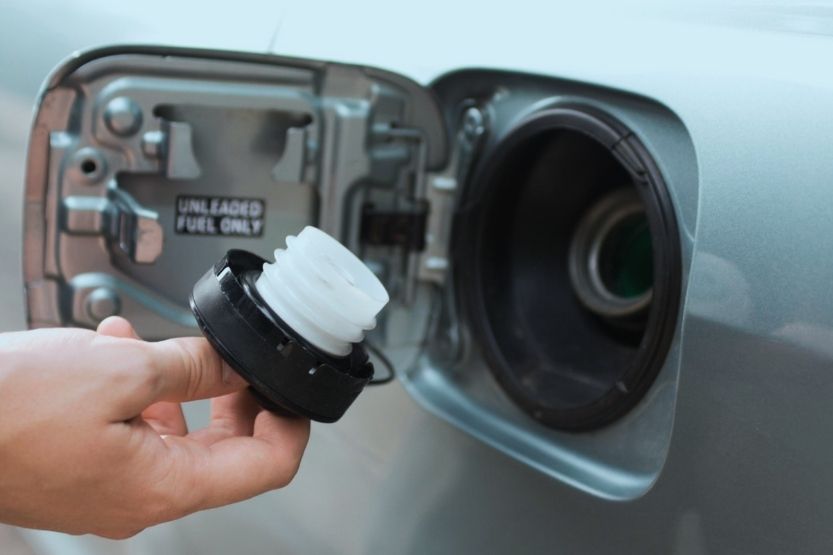
1. Loose Gas Cap
Prevents Contaminants from Entering the Gas Tank
A gas cap, also known as a fuel filler cap, does more than provide a reliable seal. It keeps dirt, dust, water, and other contaminants from going inside the gas tank. As a result, the sensitive parts of the fuel system are protected from any damage.
Part of the Evaporative Emission System (EVAP)
Since it’s part of the Evaporative Emission System (EVAP), a gas cap also helps change harmful fuel vapor into something harmless before it’s released into the atmosphere.
Leaking Vapors
So, if it becomes loose or damaged, the fuel vapors could leak and cause the malfunction indicator lamp to illuminate once your car’s onboard computer detects it.
A gas cap will eventually wear out and loosen because you’ll have to remove it every time you refuel your car. One way of knowing that you need to replace a gas cap is if it doesn’t click when you’re tightening it, or when it doesn’t click, then pop to loosen it again.
Symptoms of a Loose Gas Cap
- Smell of fuel
- Discolored fuel residue around the gas tank cover or opening
- Illuminated check engine light or malfunction indicator lamp
How to Fix This Issue?
Check if your car’s gas cap is loose or damaged. If it’s loose, all you have to do is tighten it with your hand until you hear a click sound. If you don’t hear any clicking after putting the cap into place, you need to buy a new one.
Again, what does it mean when the Malfunction Indicator Light comes on? When you crank your car, the Malfunction Indicator Lamp (MIL) will come on for a few seconds, then turn off. However, if it stays on, you should have your car inspected by a qualified mechanic.
2. Oxygen Sensor Failure
Number of Oxygen Sensors Varies
An oxygen sensor, also known as a lambda sensor, is found in the emissions control system. Depending on the engine, year, make, and model of a car, the number of oxygen sensors ranges from one to four.
But most modern cars, such as the Honda Civic 1.8L 4 cylinder (2013) and Toyota Land Cruiser 4.7L 8 cylinder (2000), have four oxygen sensors.
Measure the Amount of Unburned Oxygen in Your Car’s Exhaust System
Oxygen sensors measure the amount of unburned oxygen in your car’s exhaust system and then send the real-time data to the management computer within the engine. This will help determine the correct ratio of air and fuel for your car’s engine.
In addition, they’ll let you know if your car is producing excessive emissions. So, if any of the four oxygen sensors aren’t working properly, you’ll fail your state’s vehicle emissions inspection.
Since they’re in the exhaust stream, they’re susceptible to coming in contact with contaminants that could cause them to die or fail over time. These contaminants include fuel additives that aren’t considered safe for oxygen sensors, such as tetraethyl lead.
Effect of a Failing Oxygen Sensor
When they’re not working properly, it can cause your Malfunction Indicator Lamp to come on and affect the essential functions of your car engine. You might also notice engine noises, poor gas mileage, misfiring or stalling, and black exhaust fumes.
Can You Still Drive Your Car Even If an Oxygen Sensor Is Malfunctioning?
If you can still start your engine and drive your vehicle with little difficulty, the answer is yes. But it’s also not wise to ignore a faulty oxygen sensor, even for just a few days. It could put you in danger and cause other car components to malfunction.
How to Fix
Oxygen sensors don’t require regular maintenance or replacements. They’re only usually replaced when they start to fail.
3. Faulty Catalytic Converter
Responsible for Changing Harmful Gases into Non-toxic Gases
As part of the exhaust system, a catalytic converter is responsible for changing harmful gases (e.g., carbon monoxide and unburned hydrocarbons) into safer for the environment and health.
It’s said to help convert 90% of harmful car emissions into less harmful gases. And if you maintain it well, it can improve your car’s performance and overall health.
Symptoms of a Failing Catalytic Converter
- Car feels sluggish
- Poor acceleration
- Black exhaust smoke
- Excessive heat coming out from under your car
- Sulfur/rotten egg smell in the exhaust
- Trouble starting your car
- Failed vehicle emissions test
- Poor fuel efficiency
- Noise when starting your car engine
- Illuminated malfunction indicator lamp with a catalytic converter diagnostic trouble code
Your Car Can Still Function with a Bad Catalytic Converter
Usually, your car can still function with a bad catalytic converter. You can even drive your car without one, but it’s not always a good idea. You could damage the engine of your car and reduce its performance.
The good news is a catalytic converter can last for a decade or longer. The bad news is it’s still susceptible to overheating, physical damage, contamination, and clogs.
Depending on the quality and type of your chosen catalytic converter and the type of car you own, a catalytic converter could cost more than $1,000. Due to the high cost, replacing it is usually considered a last resort.
What Happens If You Decide Not to Replace a Faulty Catalytic Converter?
The most likely scenario is that your catalytic converter will clog, which prevents the proper flow of exhaust fumes through the entire exhaust system. Eventually, it will lead to poor engine performance, to the point you’ll have trouble getting your car started.
If you want to save money, you can replace it yourself. Whether it will be an easy or a tough job depends on how your catalytic converter is attached to your car.
4. Spark Plug Wires Issues
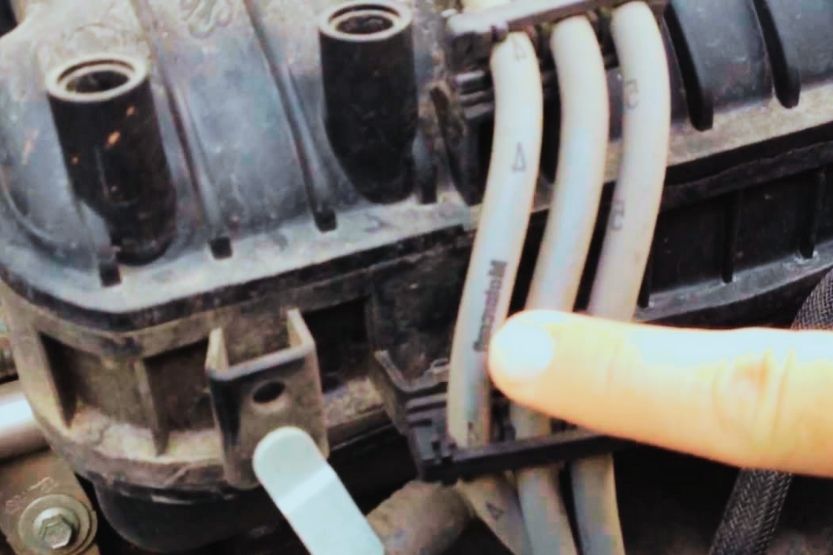
Common in Most Older Cars Using Distributor-based Automotive Ignition Systems
Spark plug wires, also called ignition wiring, are common in most older cars using distributor-based automotive ignition systems. High-quality ones could last around 60,000 to 70,000 miles before requiring replacement.
Transfer the High-voltage Electricity from the Ignition Coil to the Spark Plugs
The main function of these wires is to transfer the high-voltage electricity from the ignition coil to the spark plugs. This high-voltage electricity generates a lot of heat. Over time, exposure to high heat can cause spark plug wires’ brittleness.
Effects
You’ll encounter many engine issues if you don’t replace them as soon as possible. They won’t be able to create enough spark, leading to incomplete combustion.
If the air or oxygen supply is low, the fuel can’t completely react to create carbon dioxide and water. In short, your engine won’t have enough power, or worse, it will not start at all.
Symptoms of a Bad Spark Plug or Spark Plug Wire
- Poor engine performance
- Decreased acceleration
- Poor fuel efficiency or gas mileage
- Misfires and stalling
- Illuminated malfunction indicator lamp
Can You Still Drive Your Car Even with a Bad Spark Plug Wire?
It’s usually not good to keep on driving if you have faulty spark plug wires. They don’t only make your car difficult or impossible to drive, but they could also damage other components of your emission system, such as the catalytic converter.
What to Do
If you suspect you have faulty spark plug wires, don’t drive your car and immediately contact a trusted mechanic in your area.
But ideally, you shouldn’t wait for these wires to fail before replacing them. A spark plug wire can cost anywhere from $190 to $229. This doesn’t include the labor cost, which could cost between $67 and $85.
Replace Defective or Old Spark Plug Wires
You can replace defective or old spark plug wires yourself. Ensure you have the correct tools (e.g., spark plug separator) and materials (e.g., silicone grease). You also need some knowledge on how to perform this procedure and at least an hour of free time.
Note: Replacing spark plug wires is generally easy, but it’s more complicated than basic car maintenance. You’ll need to take out each wire one at a time and ensure that the new spar plug cables match the original cables.
Conclusion – Malfunction Indicator Lamp
Similar to other dashboard warning lights, the purpose of a malfunction indicator lamp is to alert you if your car’s diagnostic system has detected a problem with any of its components. The detected problem could be serious, or it could be trivial.
Again, the best practice is not to ignore your Malfunction Indicator Lamp or Check Engine Light. Failure to take it seriously could be costly and dangerous. In this situation, stop and park your car on the roadside and seek assistance as soon as possible.
Read next:
Causes and Fixes of Check Engine Light On and Off Intermittently
10 Reasons Why Check Engine Light Is On
Can I Drive Two Hours with My Check Engine Light on?
Why Would a Check Engine Light Come on After an Oil Change? [Plus How to Fix]

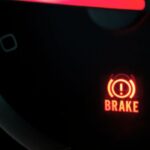

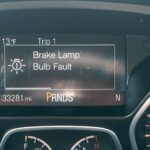
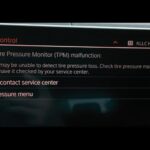
![BMW Drivetrain Malfunction [Causes, Reset, and Repair Cost] bmw drivetrain malfunction causes](https://roadsumo.com/wp-content/uploads/2022/03/BMW-drivetrain-malfunction-causes-150x150.jpg)



